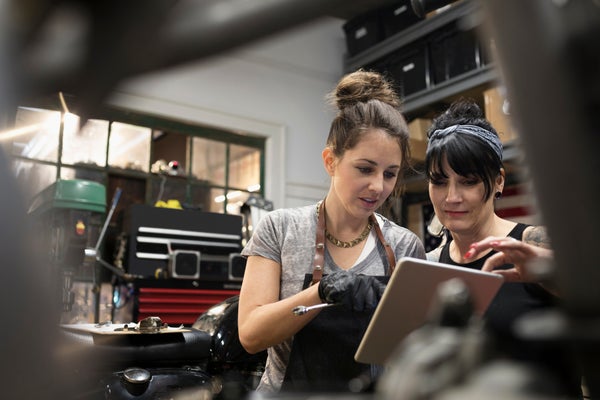This article was published in Scientific American’s former blog network and reflects the views of the author, not necessarily those of Scientific American
The recent (and encouraging) news that kids are more likely than ever to draw women when asked to draw a scientist has filled every news and social media channel I have access to. But in among the warmed hearts were other details that even the authors themselves wanted to highlight. Even though increased representation and shifted narratives have resulted in progress – from less than 1% of drawings featuring women to 28% can hardly be described as anything else – the changes in current drawings from pre-K to grade school provide an important glimpse into just how easily stereotypes can creep back in. The lead author mentioned that drawings after kindergarten started to feature more men, more lab coats, and more glasses. But the cartoons and hero stories we use to talk about science include more than just what a scientist looks like or wears. Too often the stories we tell are planting the seed that scientists are isolated people who work alone.
The lone-genius narrative is a powerful one. Picturing one person in a lab declaring “Eureka” is certainly easier than imagining an international team using a cross-time-zone conference call to finalize plans for their upcoming 17-minute window on a lunar orbiter. Even researchers who study trends in scientific collaboration have to reference the powerful idea. But research has shown that science is far from a lonely endeavor and has been gravitating towards dramatically larger teams over the last century.
One study published in the Journal of the Association for Information Science and Technology in 2015 followed the upward trend of co-authors on academic publications. The authors found that in 1900, single-author papers accounted for 87% of papers in natural and medical sciences and 97% of those in the social sciences and humanities. By 2011, the percentage of single-author papers had dropped to 7% and 38% respectively. Every few decades the number of authors started to jump, first with more dual-author papers, then papers with three authors, then four, etc. In that same period, papers with 11-20 authors increased by more than 2,000%. Part of that shift came from the nature of the work. Constantly evolving technology, easier long-distance communication, and interdisciplinary pursuits have all led to teams and expertise spreading across the globe. In an extreme example, work done by high-energy experimental physicists can involve massive accelerators and have author lists that extend into the hundreds.
On supporting science journalism
If you're enjoying this article, consider supporting our award-winning journalism by subscribing. By purchasing a subscription you are helping to ensure the future of impactful stories about the discoveries and ideas shaping our world today.
The motivations and pitfalls of growing author lists have their own implications for the research community, but they hold important lessons for the young public as well. Being an expert in one thing doesn’t mean having to become an expert in everything, and loving science doesn’t have to mean lots of time spent alone. As kids, kitchen experiments and basement engineering projects can mean time with friends instead of time away from them. As adults, a career in STEM can mean getting to work with all kinds of different experts to see what you can do as a team.
While a single bad grade or a confusing experience with chemistry can easily convince a kid that they aren’t cut out for science, imagining STEM careers as lonely futures can convince kids that they wouldn’t have wanted to do it anyway. But entering the world of STEM is far from isolating; it means becoming part of a broad network of people with shared interests and experiences. One study – interestingly conducted in a pre-Facebook world – tried to look at the network of social connections in the scientific community. Using co-authorship as a proxy for collaboration, the author studied the interconnected webs of various research communities. While some islands did exist, 80-90% of researchers in a database were connected through peers. In those main groups, any two researchers selected by random were typically separated by only ~5-6 links. Working alone in a lab presents a very different picture for a kid than working with a team and becoming a part of a vast network of people who are interested in the same things you are. Imagining a lifetime of talking to other people just as excited about dinosaurs as you are is something any kindergartner can get behind.
